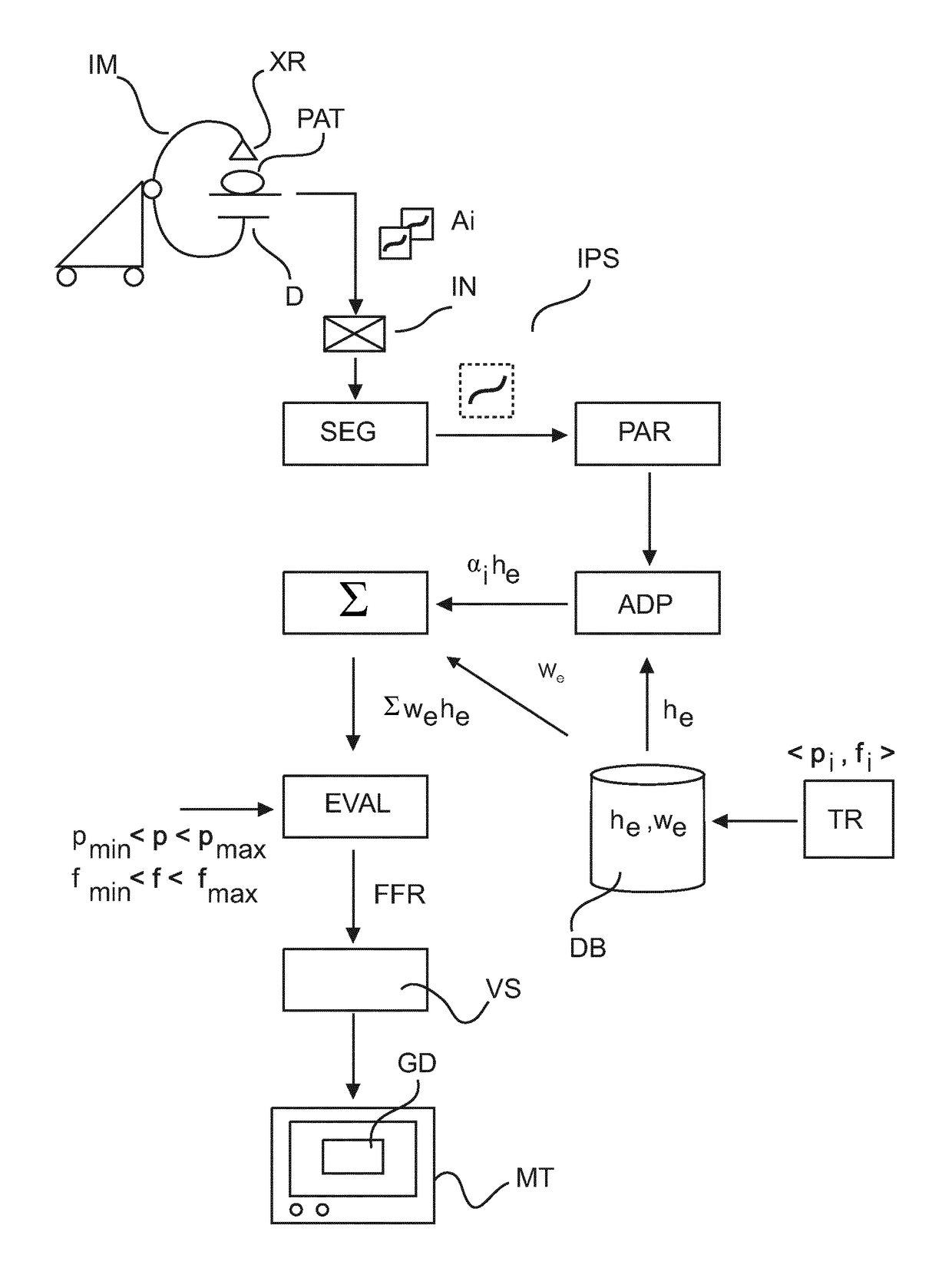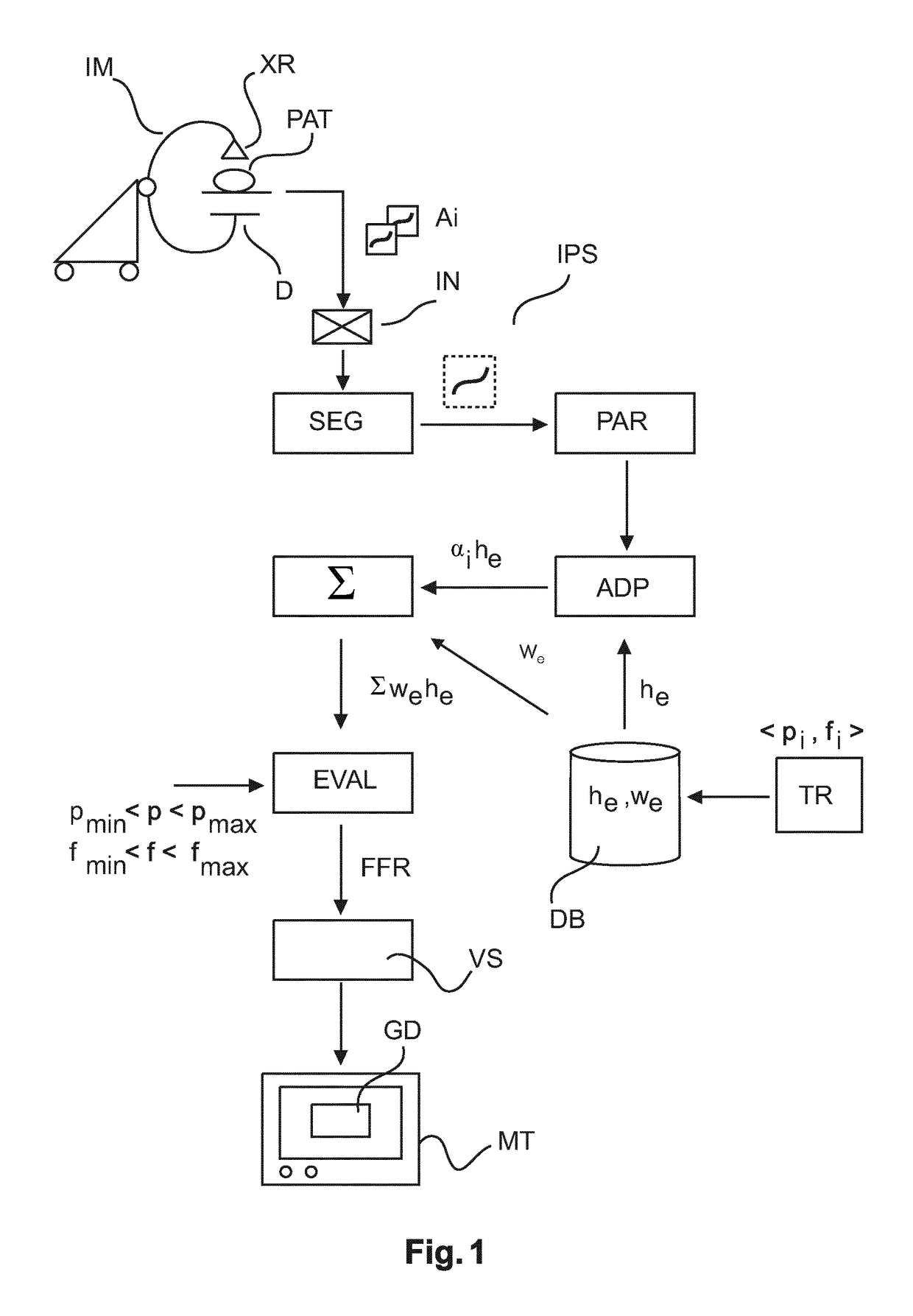Local FFR estimation and visualisation for improved functional stenosis analysis
a functional stenosis and local ffr technology, applied in the field of image processing methods, can solve the problems of putting strain on already cash-strapped national health services, unfavorable patient care, and largely interventional, and achieve the effect of reducing burden on patients and determining fractional flow reserve values more efficiently
- Summary
- Abstract
- Description
- Claims
- Application Information
AI Technical Summary
Benefits of technology
Problems solved by technology
Method used
Image
Examples
Embodiment Construction
[0033]With reference to FIG. 1, there is shown an image processing system IPS that allows FFR simulation. The system allows computing FFR values from images Ai that encode image contrast sufficient to identify respective projection views (“footprints”) of the coronaries in form of a vessel tree of a patient PAT.
[0034]The imagery Ai is acquired by an imager IM, for instance, a planar X-ray radiography apparatus or a rotational X-ray C-arm system or other suitable imaging modality. The imager IM includes an X-ray source XR and detector D. The patient is exposed at the relevant region of interest (for instance the cardio region) to radiation that emanates from the X-ray source XR. The radiation interacts with matter in the region of interest (in this case the cardio region) and is then detected at the detector D. The radiation detected at the detector D is translated into said digital images Ai which are output and received by the image processing system IPS at its input port IN.
[0035]...
PUM
 Login to View More
Login to View More Abstract
Description
Claims
Application Information
 Login to View More
Login to View More - R&D
- Intellectual Property
- Life Sciences
- Materials
- Tech Scout
- Unparalleled Data Quality
- Higher Quality Content
- 60% Fewer Hallucinations
Browse by: Latest US Patents, China's latest patents, Technical Efficacy Thesaurus, Application Domain, Technology Topic, Popular Technical Reports.
© 2025 PatSnap. All rights reserved.Legal|Privacy policy|Modern Slavery Act Transparency Statement|Sitemap|About US| Contact US: help@patsnap.com



